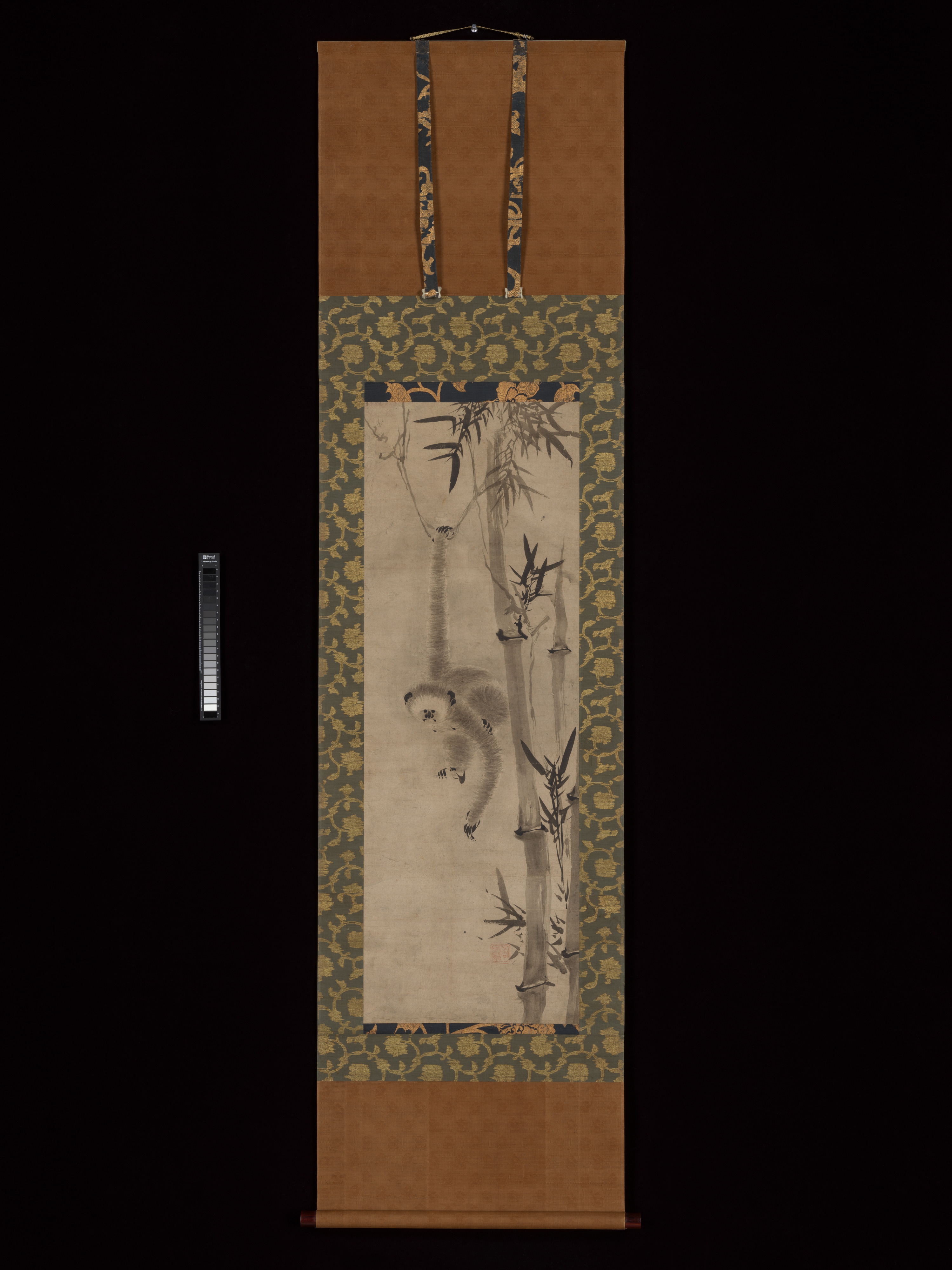Gibbon and Bamboo
Sesson Shūkei 雪村周継 Japanese
Not on view
This scroll painting portrays a gibbon hanging from a vine near stalks of bamboo. The gibbon’s lowered left hand suggests that he is reaching for something, probably the reflection of the moon in the water below—a scene common in Japanese gibbon paintings and one rooted in Zen Buddhist teachings about the delusional nature of the unawakened mind. Painted entirely in ink, the image belongs to a long line of monochrome Japanese simian paintings inspired by the late thirteenth-century Chinese painter Muqi, whose works, including several of gibbons, were collected in Japan during the artist’s own lifetime. Sesson Shūkei, who was raised and spent his early career in northeastern Japan, relocated in midcareer to Kamakura and nearby Odawara, cities with large Zen monasteries and powerful warrior patrons whose collections were replete with old Chinese paintings. Sesson’s work during and after this period makes clear that he closely studied paintings by Muqi and other celebrated Chinese painters of the Song and Yuan dynasties held in local collections. The work is impressed at lower right with a square, red seal reading Shūkei.
Due to rights restrictions, this image cannot be enlarged, viewed at full screen, or downloaded.
This artwork is meant to be viewed from right to left. Scroll left to view more.



